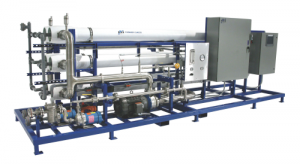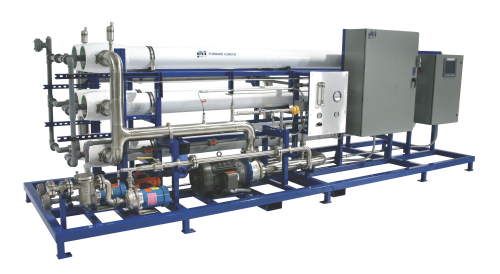- Nano-selective forward osmosis technology by SideStroem featured in Everything About Water - February 10, 2024
- SideStroem and Singapore Institute of Technology featured in AsianScientist - April 29, 2023
- SideStroem joins world class accelerator program - November 12, 2022
An introduction to forward osmosis system design

In any given real life application, forward osmosis membrane performance will be quantified by the water flux Jw, the reverse salt flux Js, and the rejection R towards feed stream contaminants. Improved Jw and Js values are obtained by increasing membrane A-values and decreasing membrane B-values and S-values. Real-life applications of FO membranes mounted in FO systems will have different requirements on Jw, Js, and R-values. And without a good understanding of these requirements, forward osmosis membrane developers run the risk of designing membranes that under-perform in the given application.
When considering FO system design, a definition of “FO system” is required. Here, “FO system” is common term for all the components needed to enable FO membranes to be applied for real-life applications. These components typically include: The FO membrane housing (also know as an FO module), pumps, pipes, valves, feed stream pretreatment systems, various instruments & meters for continuous performance evaluation, draw solution reservoir, feed solution reservoir, performance enhancing design elements, and – in the case of hybrid FO systems – a draw solution regeneration system.
FO system developers typically have 2 main objectives: reducing external concentration polarization effects and reducing membrane fouling. External concentration polarization (ECP) takes place on the surface of the active layer as water is extracted from the feed stream into the draw stream, and can be either concentrative (active layer facing feed stream) or dilutive (active layer facing draw stream). The end result of ECP is identical to that of internal concentration polarization: reduced effective osmotic driving force resulting in reduced water flux performance. Membrane fouling is common term for the build-up of deposited solutes or particles onto the membrane’s surface or into the membrane’s pores in a way that degrades overall membrane performance.
It is important to note, that current FO system design efforts work towards maintaining membrane A, B, and S values when the membrane is in operation but cannot improve A, B, and S values compared to what the membrane was “born” with.
In other words:
In today’s world, you cannot equip an FO system with an under performing FO membrane and expect superior system design to boost membrane performance to acceptable levels.

